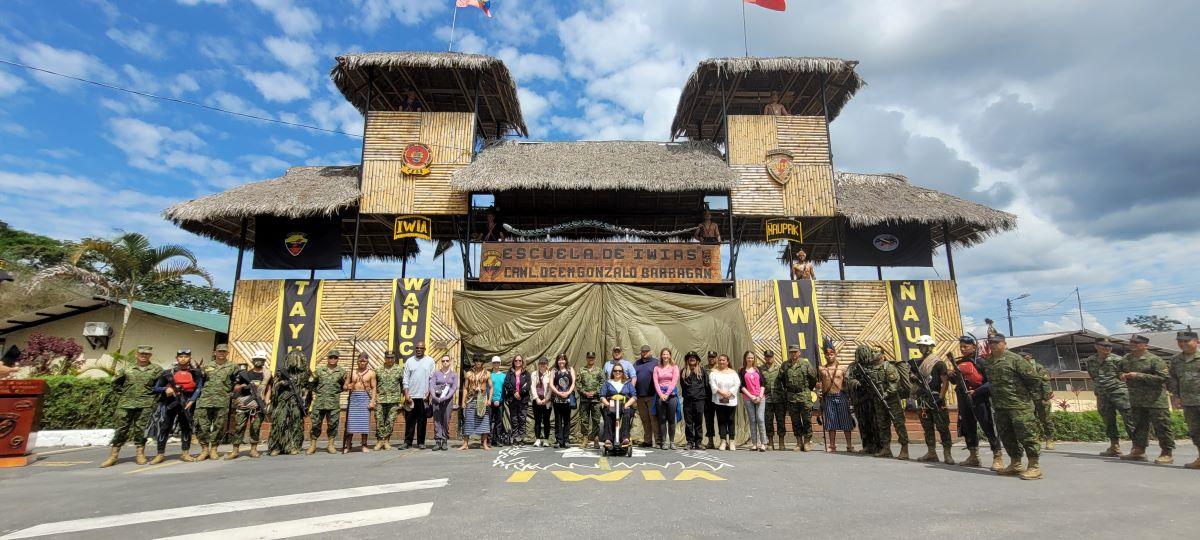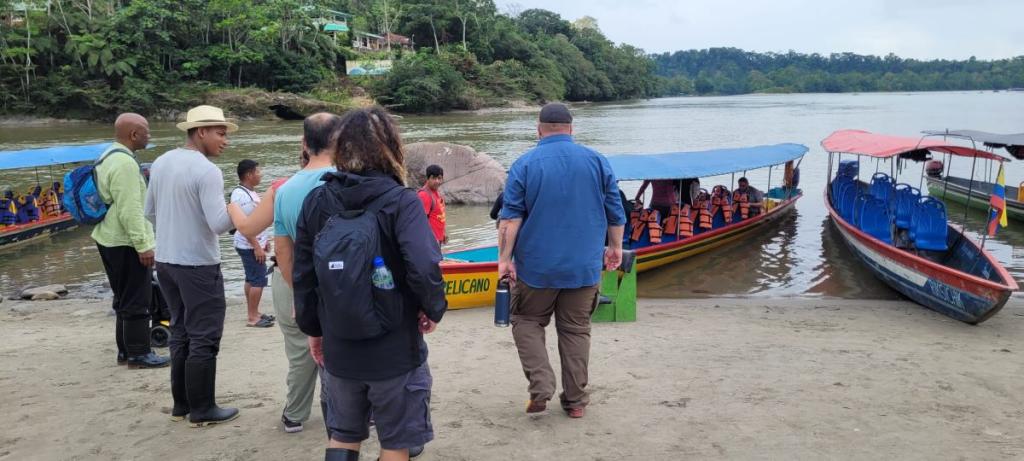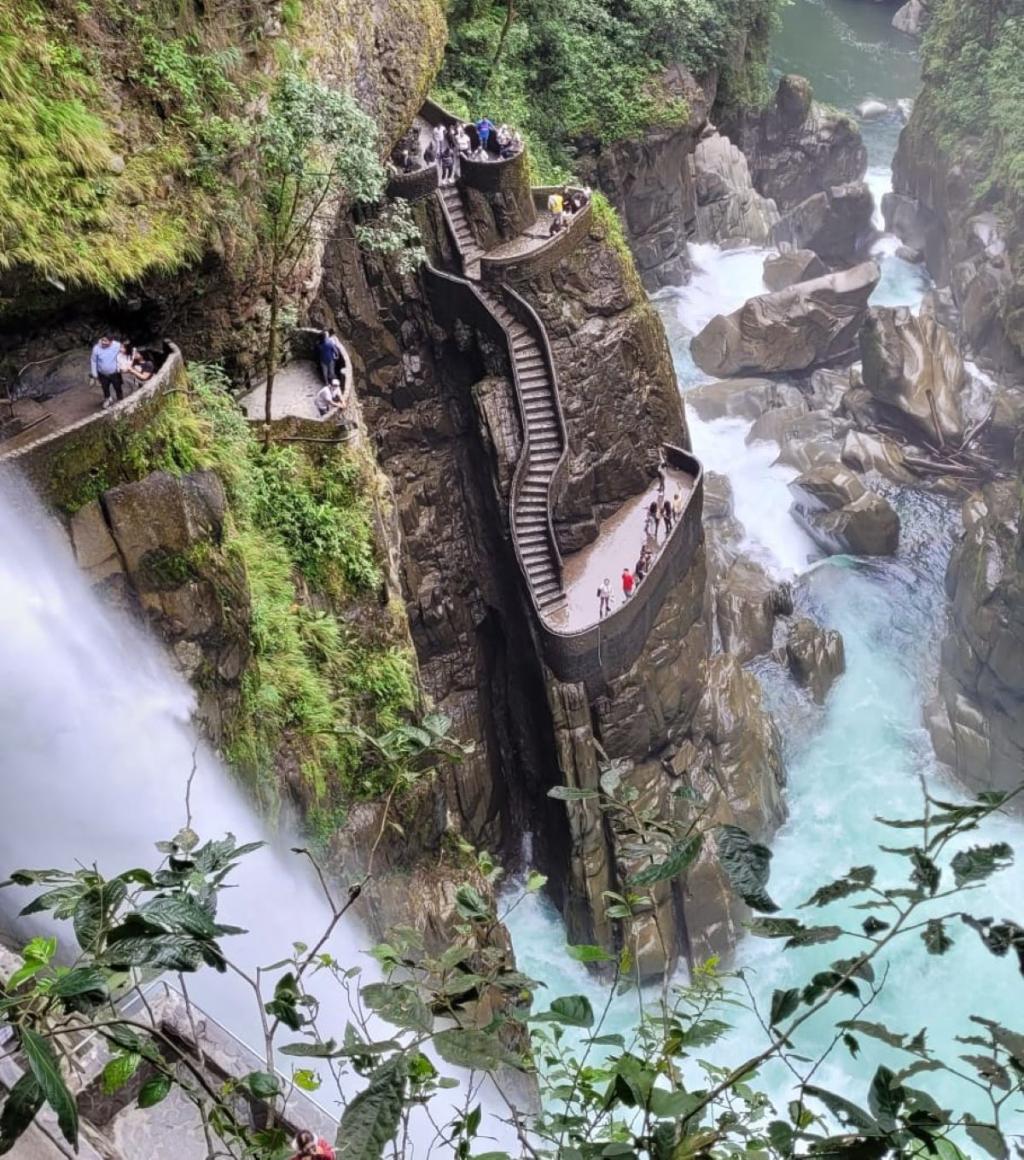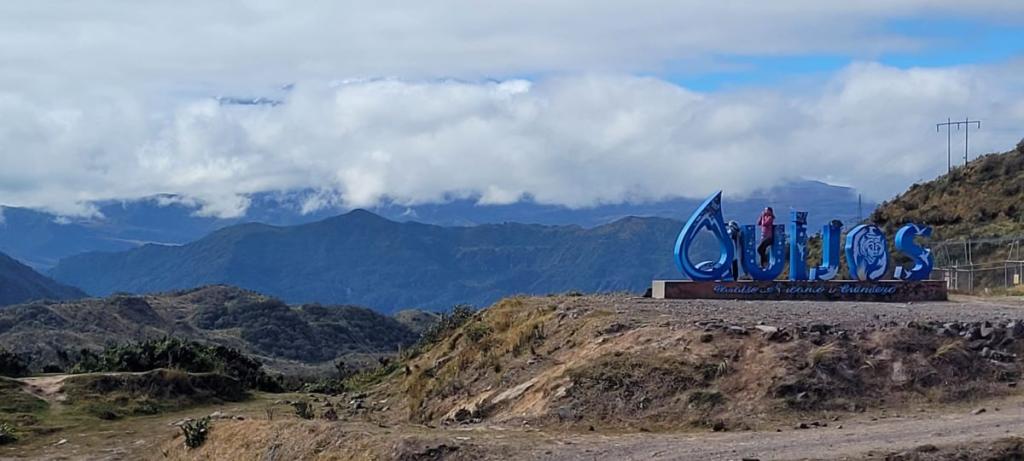Students Return from MA in Global Leadership Field Trip to Ecuador

As we shared in an earlier blog post, every year the MA in Global Leadership (MAGL) program takes students abroad for its elective GBLD 535: International Cultural Leadership Field Trip. RRU Students and alumni have returned from the two-week Ecuador trip with rich new experiences and learning with the Global Leadership Program’s numerous in-country friends, partners, and communities. This excursion was led by Dr. George Fedha, World Food Program country director for Namibia and MAGL instructor, and Lisa Corak, Coordinator of the MAGL program.
In the above photo, students visited the IWIAS Amazon-based military wing. Director of the School Tcrn. Eras gave a warm welcome to the delegation of the Royal Roads University which, in compliance with the agreement with the University of the Armed Forces ESPE, visited the facilities and learned a little more about the academic activities and military instruction that the aspiring students receive. This unique military group is comprised of soldiers from the Amazonian communities such as Shuar, Amazonian Kichwa, and Huaorani, and are supported in maintaining their diverse cultural traditions.
A few more highlights …

In the above photo, students are preparing to travel down the rivers near Misahualli. They traveled by canoe and did a jungle walk before visiting several communities and people living along the rivers. The Global Leadership program has three key areas for learning: a) personal leadership working in a global context; b) leading in a diverse global context; and c) leading sustained change in complex environments.

Students visited Pailon del Diablo or “The Devil’s Cauldron”, a branch of the upper Amazon River Basin, is an 80-meter waterfall, located 17 kilometers from Baños and in the other direction is Puyo.
Ecuador has vastly different geographies, diverse communities, political dynamics, and cultures, and various socio-economic realities, offering rich opportunities for deep learning for such a small country. Traversing these allows a contextualized way of anchoring concepts in real-world contexts of economic disparity, Indigenous or minority group concerns, and political change.
Students traversed the Andean Kichwa communities of Nagsiche, Guranda, Salinas de Bolivar, Simiatug de Bolivar, Cotacachi and Otavalo. Here they engaged with Mr. Auki Tituña who has won several UNESCO and Global Awards for his work on reducing illiteracy to less than 2% among indigenous people in his community. They visited the community of Mascarilla, which has decedents from African Slaves who have regained their culture as Afro Ecuadorians. This group has made tremendous strides in women’s empowerment.
These are but a few highlights.

Above, students are returning North, close to the end of their two-week trip.
This year’s course was full and we are looking forward to filling our future excursions drawing from students interested in such learning experiences from across RRU.